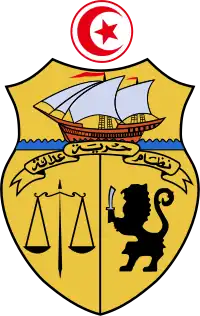Palestine–Tunisia relations
Tunisian President Habib Bourguiba had a keen interest in finding a resolution to the Palestinian conflict. He put forth a suggestion to establish a two-state solution based on the pre-1923 boundaries of the former Mandatory Palestine, encompassing Jordan as well.[1][2] After the defeat of the Palestine Liberation Organization in the 1982 Lebanon War, Tunisia received the Palestinian leadership, including Arafat. They left in 1994 after the Oslo Accords.[3] In October 1985, the Israeli Air Force launched Operation Wooden Leg in Bizerte, which led to many deaths including among Tunisian civilians.[4][5] Three years later, it assassinated the senior leader, Abu Jihad, in a targeted killing operation.
Palestine |
Tunisia |
|---|---|
References
- Chamberlin, Paul Thomas (January 15, 2015). The Global Offensive: The United States, the Palestine Liberation Organization, and the Making of the Post-Cold War Order. Oxford University Press. ISBN 978-0-19-021782-2 – via Google Books.
- Bilinsky, Yanoslav (October 14, 1973). "Moderate realism in an extremist environment ; Tunisia and the Palestine question (1965-1970)". Revue des mondes musulmans et de la Méditerranée. 13 (1): 109–123. doi:10.3406/remmm.1973.1196 – via www.persee.fr.
- Murphy, Kim (July 12, 1994). "Exile Ends as Arafat Leaves Tunisia for Gaza". Los Angeles Times.
- Cowell, Alan (June 24, 1987). "P.L.O., IN TUNIS, IS SHADOW OF FORMER POWER". The New York Times – via NYTimes.com.
- Prial, Frank J.; Times, Special To the New York (October 2, 1985). "ISRAELI PLANES ATTACK P.L.O. IN TUNIS, KILLING AT LEAST 30; RAID 'LEGITIMATE,' U.S. SAYS". The New York Times – via NYTimes.com.
This article is issued from Wikipedia. The text is licensed under Creative Commons - Attribution - Sharealike. Additional terms may apply for the media files.

